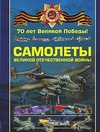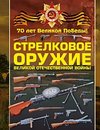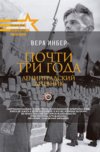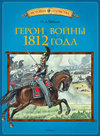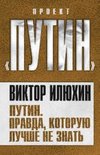
-
 Anglický jazyk
Anglický jazyk
Military uniforms
Autor: Source: Wikipedia
Source: Wikipedia. Pages: 177. Chapters: Baldric, Helmet, Tabard, Bandolier, Military beret, Military uniform, Dress uniform, Battledress, Starfleet uniforms, Uniforms of the Confederate States military forces, Peaked cap, Modern equipment and uniform of... Viac o knihe
Na objednávku, dodanie 2-4 týždne
34.47 €
bežná cena: 38.30 €
O knihe
Source: Wikipedia. Pages: 177. Chapters: Baldric, Helmet, Tabard, Bandolier, Military beret, Military uniform, Dress uniform, Battledress, Starfleet uniforms, Uniforms of the Confederate States military forces, Peaked cap, Modern equipment and uniform of the Turkish Army, Mess dress, Garrison cap, Kepi, Uniforms of La Grande Armée, Combat helmet, Denison smock, Greek Army uniforms, Slouch hat, Type 07, Campaign hat, Pith helmet, Imperial Japanese Army Uniforms, Overall, Epaulette, Bearskin, Order of the Spur, Cappello Alpino, Disruptive Pattern Material, Hackle, Jungle boot, Caubeen, Trews, Mao suit, Disruptive Pattern Combat Uniform, Sam Browne belt, Shako, Rayadillo, Tigerstripe, Tricorne, Guernsey, Gorget, Physical training uniform, Jackboot, Bicorne, Khaki, Swagger stick, Czapka, Executive curl, Shoulder mark, Ushanka, Gaiters, Modern Irish Army uniform, G-1 military flight jacket, Tam o' Shanter, Tanker boot, Scrambled egg, Multi-Terrain Pattern, Khaki drill, Shell jacket, Swedish Military Uniform, Aiguillette, Casquette d'Afrique, Splittermuster, Full dress, Budenovka, Afghanka, Balmoral bonnet, Telnyashka, Shoulder strap, Forage cap, Duffle coat, Pace stick, Pelisse, Red beret, Bashlyk, Telogreika, Pea coat, Ammunition boot, Feather bonnet, GI glasses, Rogatywka, Busby, Puttee, Smock Parachutist DPM, Insignia and badges of the Armed Forces of the Argentine Republic, Gymnasterka, Type 97 Service Dress, Field sign, Abolla, Pillbox hat, Brassard, Greatcoat, Podvorotnichok, Sailor cap, Bull polishing, Knochensack, Battle bag, List of World War II uniforms and clothing, Jump boot, Norfolk jacket, M98 battle uniform, Tally, Ganse cord, Tsarouhi, Soldier 2000, Jump smock. Excerpt: Berets have been a component of the uniforms of many armed forces throughout the world since the mid-20th century. Military berets are usually pushed to the right to free the shoulder that bears the rifle on most soldiers, but the armies of some European countries (including France) have influenced the push to the left. Berets are in some countries particularly associated with elite units, who often wear berets in more unusual colours. Examples include the maroon of Commonwealth parachute troops, the German Kommando Spezialkräfte KSK and the Danish Jægerkorpset; the green of the Royal Marines Commandos, Finnish Marine Commandos (Coastal Jaegers), French Commandos (Bérets verts), Irish Army Ranger Wing, and United States Army's Special Forces (Green Berets); the scarlet of the elite Soviet Internal Troops (Spetsnaz); the beige or tan of Commonwealth special forces units (SAS) and United States Army Rangers; or the wide black of French Chasseurs alpins, the first military unit to have worn berets. Given its practicality, the informal use of berets by the military of Europe dates back millennia, one example being the Blue Bonnet, that became a defacto symbol of Scottish forces in the 16th and 17th centuries. As an officially required military headdress, its use dates back to the Carlist Wars of Succession for the Spanish Crown in the 1830s by order of General Tomás de Zumalacárregui who wanted a local and non-costly way to make headgear that was resistant to the mountain weather and easy to care for and be used on formal occasions. Other countries followed suit after the creation of the French Chasseurs alpins in the early 1880s. These mountain troops were issued with a uniform which included several features which were innovative for the time, notably the large ...
- Vydavateľstvo: Books LLC, Reference Series
- Rok vydania: 2016
- Formát: Paperback
- Rozmer: 246 x 189 mm
- Jazyk: Anglický jazyk
- ISBN: 9781157609551


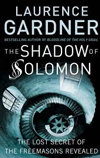


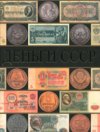
 Ruský jazyk
Ruský jazyk 